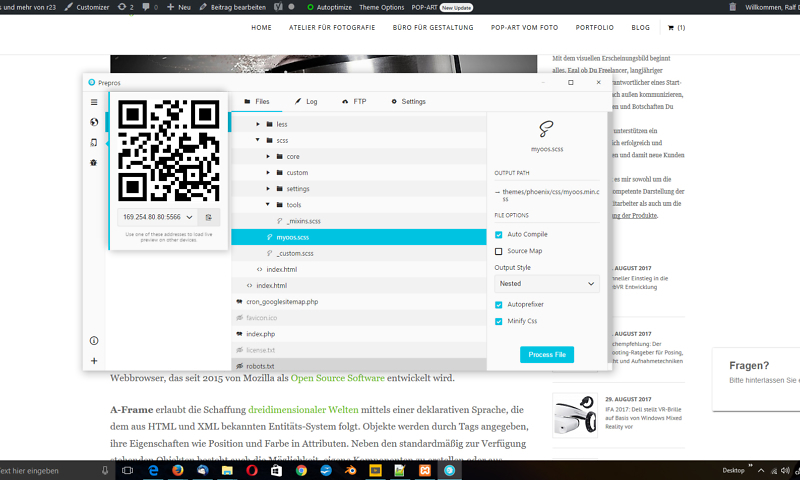

Whether you offer marketing, customization, or web design and development services, the Shopify Partner Program will set you up for success. Grow your business with the Shopify Partner Program So let’s dive into some of the features of Sass!
#Prepros compatibilidad series
There’s an interesting article about the history and benefits of both Sass and SCSS, for this series of articles, we’ll be covering the SCSS syntax. The other (older) syntax for Sass is known as the indented syntax, or sometimes referred to as just “Sass.” It provides a more concise way of writing CSS, using indentation instead of brackets to denote nesting of selectors and new lines, rather than semi colons to denote new properties. It was a much more approachable syntax for new users to Sass, which made Sass’ popularity skyrocket after its release. This means that all you have to do is change the file extension on a CSS file to make it into a valid SCSS file. It makes it easy to turn a regular CSS project into a Sass project, because CSS is valid SCSS syntax. One of the reasons SCSS existed in the first place was to aid in the adoption of Sass altogether.

In version 3 of Sass, SCSS was introduced as “the new main syntax.” The first is SCSS, also known as Sassy CSS, which is an extension of the CSS syntax. The main difference between Sass and SCSS is the file extension and syntax. Sass is compatible with all versions of CSS, so you can use any available CSS libraries. It’s one of the oldest CSS preprocessors, and has been actively supported for more than nine years. Sass stands for Syntactically Awesome Style Sheets. The two terms are often used interchangeably, and in plain language, often refer to the same thing-the CSS preprocessor called Sass. If you’ve never used a CSS preprocessor before, and come across articles that refer to Sass or SCSS, you might be wondering what the difference is. Sass gets compiled by Shopify into CSS and served to the web browser. Shopify uses Sass, more specifically, the SCSS syntax. The most popular CSS preprocessors are Sass, Less, and Stylus. Remember, browsers only understand and render plain ol’ CSS. CSS preprocessors usually require some kind of compiler, whether that’s an application or script, that will convert your CSS preprocessor syntax (depending on which preprocessor syntax you’re using) into regular CSS syntax that your browser will understand. To overcome these limitations, the CSS preprocessor was born.Ī CSS preprocessor is a scripting language that extends CSS and gets compiled into regular CSS syntax.
#Prepros compatibilidad code
CSS is a declarative language, so it’s difficult to create abstractions and reusable chunks of code in our stylesheets. What is a CSS preprocessor?Īs our web projects have become larger and more complicated than they once were, CSS was found to have some limits. This is part one in a three part beginner’s guide to Sass with Shopify.Ĭheck out part two of this series, making stylesheets smarter with Sass mixins and functions.


 0 kommentar(er)
0 kommentar(er)
